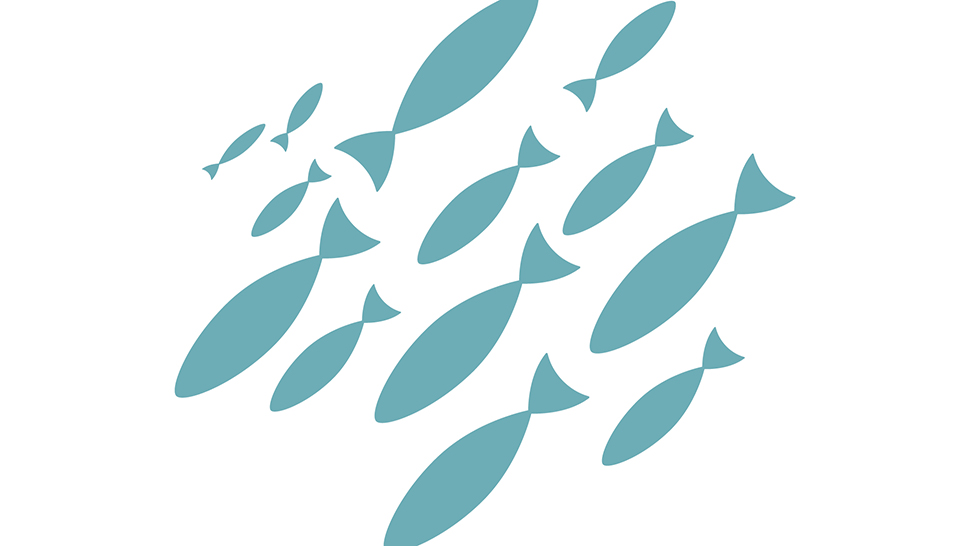
Consumers have a powerful role to play in supporting sustainable, less wasteful fisheries, and we’re here to help guide you. In fact, we’ve created a “grocery guide” to help you identify the best seafood to purchase the next time you’re at the store.
Since 2002, Bon Appétit has followed the recommendations of the Monterey Bay Aquarium’s Seafood Watch program, which applies science-based standards to aquaculture practices and fisheries to determine the sustainability of commonly eaten seafood species. For nearly two decades, it’s been our policy to source only Seafood Watch rated “Best Choice” or “Good Alternative” seafood, ensuring that the seafood our chefs serve is sustainably harvested and does not irreparably harm fisheries, and our oceans in the process. When rating seafood, Seafood Watch focuses on a variety of factors including waste generated during the fishing process – citing less wasteful fishing practices and minimization of bycatch as a major components of creating a sustainable fishery.4 These Seafood Watch ratings represent independent, verifiable standards that are useful for companies like Bon Appétit, and every day consumers alike:
- Best Choice: The seafood is caught or farmed in ways that cause little or no harm to other wildlife or the environment, and they’re managed well.1
- Good Alternative: Alternative comes from sources that align with most of our guiding principles. However, one issue needs substantial improvement, or there’s significant uncertainty about the impacts on wildlife or the environment.2
- Avoid: Seafood rated an Avoid comes from sources that don’t align with our guiding principles. The seafood is caught or farmed in ways that have a high risk of causing harm to wildlife or the environment.3
In addition to regularly updated ratings and recommendations, Seafood Watch also maintains a mobile-friendly website app that can be used to find sustainable seafood whenever you’re at the grocery. Whether you choose to check online before creating your shopping list, or want to consult the site on-the-go, here are a few no-brainer sustainable seafood choices:
- Any pole or hand-line caught fish species on Seafood Watch’s Best Choices or Good Alternatives list are a safe bet to avoid bycatch. Some examples include specifically FAD-free Albacore and Pacific Skipjack tuna, hand-line caught swordfish, as well as hand-line and pole caught Atlantic cod.
- Farmed seafood on Seafood Watch’s Best Choices or Good Alternatives list preclude the fish from having been caught in a bottom trawl or another ecologically destructive wasteful fishing method. Examples include US farmed bass, catfish, lionfish, and trout, as well as farmed oysters, scallops mussels, and clams.
- Sometimes simple is better, with ever-versatile and delicious white fish heavily represented on both the Best Choices and Good Alternatives lists. Try Alaskan Cod, Canadian and Pacific cod, hand-line and pole-caught Atlantic cod, and tilapia from Canada, Ecuador, Peru, and the United States.
1 2 3 https://www.seafoodwatch.org/recommendations/our-standards
4 https://www.seafoodwatch.org/recommendations/our-standards/standard-for-fisheries